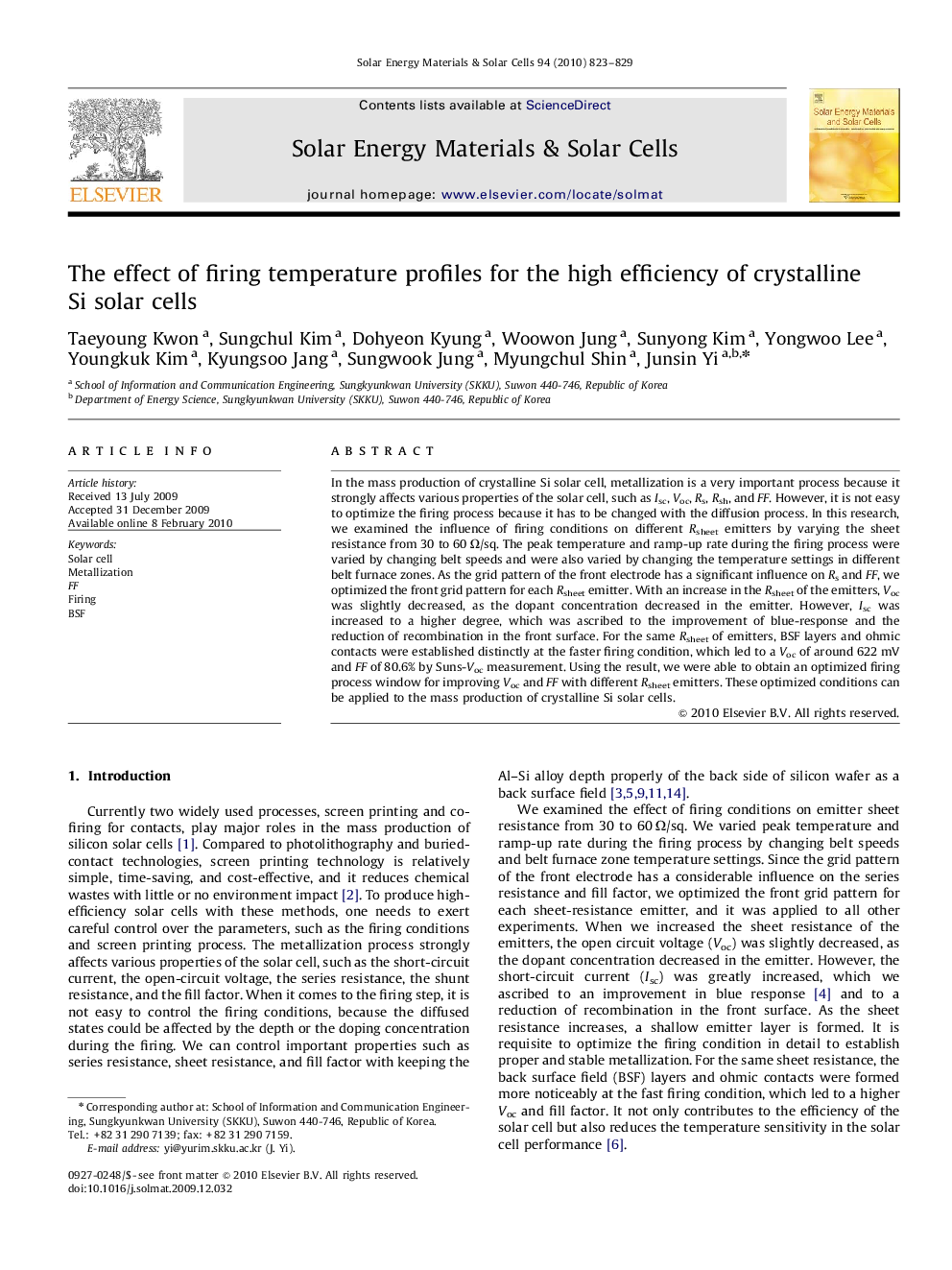| Article ID | Journal | Published Year | Pages | File Type |
|---|---|---|---|---|
| 80098 | Solar Energy Materials and Solar Cells | 2010 | 7 Pages |
In the mass production of crystalline Si solar cell, metallization is a very important process because it strongly affects various properties of the solar cell, such as Isc, Voc, Rs, Rsh, and FF. However, it is not easy to optimize the firing process because it has to be changed with the diffusion process. In this research, we examined the influence of firing conditions on different Rsheet emitters by varying the sheet resistance from 30 to 60 Ω/sq. The peak temperature and ramp-up rate during the firing process were varied by changing belt speeds and were also varied by changing the temperature settings in different belt furnace zones. As the grid pattern of the front electrode has a significant influence on Rs and FF, we optimized the front grid pattern for each Rsheet emitter. With an increase in the Rsheet of the emitters, Voc was slightly decreased, as the dopant concentration decreased in the emitter. However, Isc was increased to a higher degree, which was ascribed to the improvement of blue-response and the reduction of recombination in the front surface. For the same Rsheet of emitters, BSF layers and ohmic contacts were established distinctly at the faster firing condition, which led to a Voc of around 622 mV and FF of 80.6% by Suns-Voc measurement. Using the result, we were able to obtain an optimized firing process window for improving Voc and FF with different Rsheet emitters. These optimized conditions can be applied to the mass production of crystalline Si solar cells.
